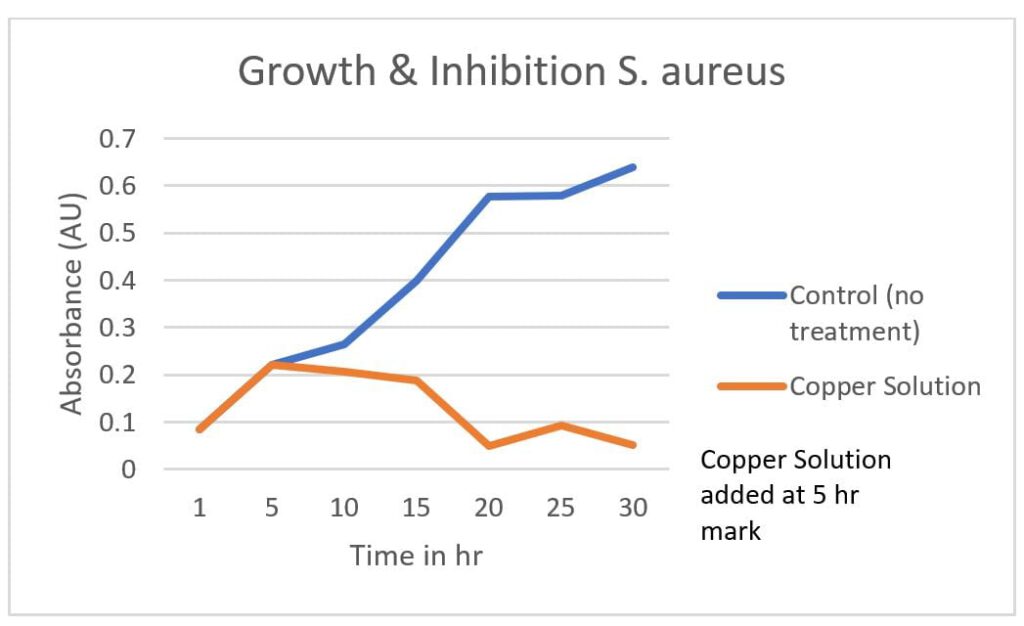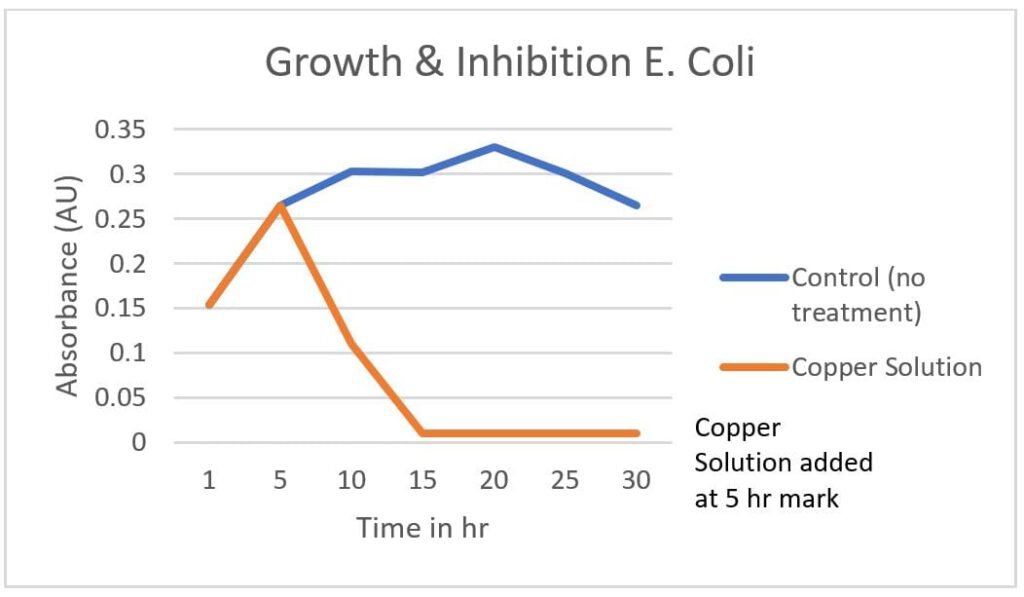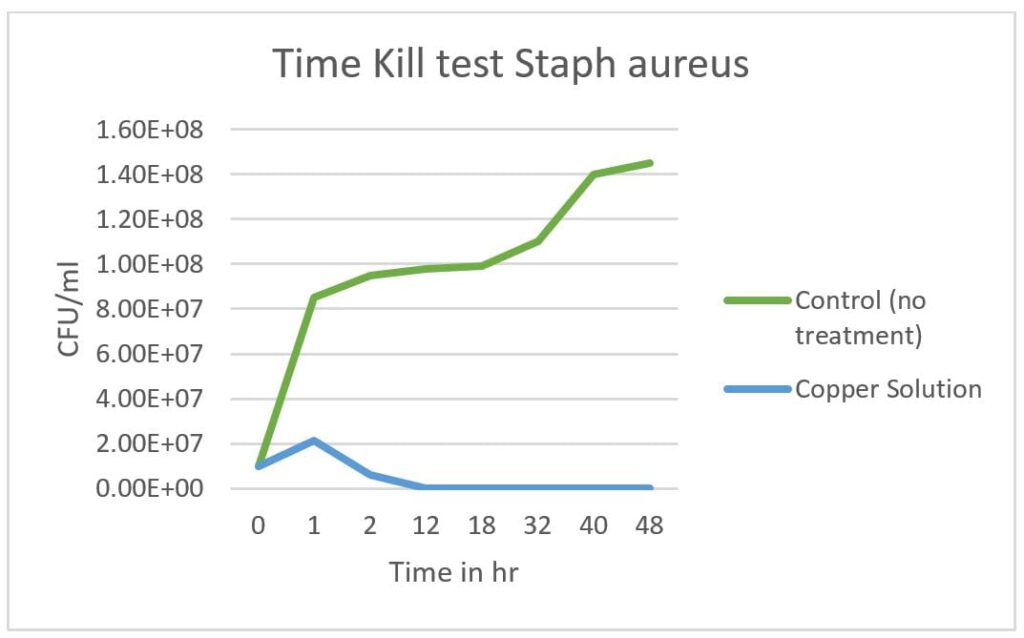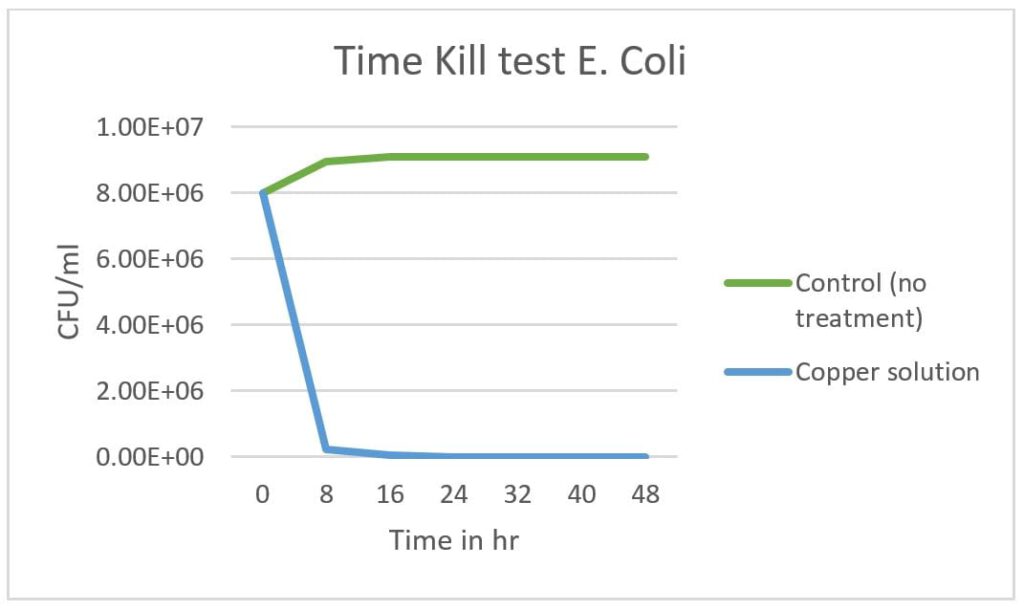As public pools and spas begin to open for the summer swim season, it’s important to be aware of the health implications that can affect your family. Recreational water illnesses (RWIs), are becoming more prevalent in pools across the country, causing health issues such as infections on the skin and eyes, as well as respiratory and gastrointestinal issues. The best way to prevent RWIs from making your family sick is to know the facts.
The team at iONRx® recently performed a study on two different pathogenic strains that are commonly found in swimming pools, water parks, or hot tubs. Our team first tested the growth and inhibition of two common bacteria found in bodies of water. The second test analyzed how long it would take to kill the two bacteria using the only free ionic copper-based water treatment solution with antimicrobial properties on the market called AquaCop, the foundation of iONRx®.
Background Information
According to the CDC, recreational water illnesses (RWIs) are caused by germs and chemicals found in the water we swim in. They are spread by swallowing, breathing in mists or aerosols of, or having contact with contaminated water in swimming pools, hot tubs, water parks, water play areas, interactive fountains, lakes, rivers, or oceans. RWIs can also be caused by chemicals in the water or chemicals that turn into gas in the air and cause air quality problems at indoor aquatic facilities.
Recreational water illnesses (RWIs) are caused by germs spread by swallowing, breathing in mists or aerosols of, or having contact with contaminated water in swimming pools, hot tubs, water parks, water play areas, interactive fountains, lakes, rivers, or oceans. RWIs can also be caused by chemicals in the water or chemicals that evaporate from the water and cause indoor air quality problems. RWIs can be a wide variety of infections, including gastrointestinal, skin, ear, respiratory, eye, neurologic and wound infections.
The Science behind the Science

Since ancient times, drinking water vessels were often made of copper to help keep it fresh. While crossing the plains, American settlers put copper pennies in their water barrels to inhibit stagnation, although no one really understood why or how it worked at the time. Subsequent research has identified that it was the copper ions emitted from the copper that disrupted the cell structure and chemical makeup of microorganisms, eliminating them in a safe way.
Since then here has been significant research that shows that the free ionic form of copper is extremely effective at killing a wide variety of bacteria, versus total copper. The problem is that harvesting the free ionic form of copper at levels over 5 ppm is extremely difficult, which makes this method very costly. Research conducted by UC Berkley, tested the relationship of Free Ionic Copper and Toxicity to Bacteria in solutions of organic compounds. What they discovered was:
- The Free Ionic form of Copper was the only toxic form of copper that was in a solution with organic compounds. Other forms of copper compounds showed extremely low efficacy to bacteria.
- Free Ionic Copper showed over 300 times the effectiveness over any other form of copper compound.
- Between 96% to 99.8% of the total amount of copper in a Total Copper Compound was bound and no longer in a free ionic form and toxicity to bacteria was low to nonexistent.
Note: The testing below was done by an independent lab to show the effectiveness of iONRx on certain bacteria. These tests have not been evaluated by the EPA.
Bacteria #1 – Staphylococcus aureus
Staphylococcus aureus is a Gram-positive, round-shaped bacterium. Frequently found in the nose, respiratory tract, and on the skin. Although S. aureus is not always pathogenic, it is a common cause of skin infections including abscesses, respiratory infections such as sinusitis, and food poisoning. Pathogenic strains often promote infections by producing virulence factors such as potent protein toxins, and the expression of a cell-surface protein that binds and inactivates antibodies. The emergence of antibiotic-resistant strains of S. aureus such as methicillin-resistant S. aureus (MRSA) is a worldwide problem.
Bacteria #2 – E. Coli
E. coli is used in public health as an indicator of fecal pollution (as of water or food) and in medicine and genetics as a research organism and that occurs in various strains that may live as harmless inhabitants of the human lower intestine or may produce a toxin causing intestinal illness. E. coli strains are found worldwide and live in significant numbers in human and other animals as part of the normal bacterial population of the large intestines.
Test #1 – Growth and Inhibition of Bacteria
Testing Facility – University Laboratory
Method of Test – Growth & Inhibition
Bacteria Tested – Staph aureus & E. Coli – MRSA
Description of Test
Growth & Inhibition testing is a useful method of testing how well a product can prevent bacteria from flourishing. Two samples of bacteria are started. At a specific time point in the test, the sample product is added to one of the samples to determine if the product can prevent further growth of the bacteria. The test can also determine if the sample product can eliminate the bacteria over a period of time.

Testing Notes:
The Free Ionic Copper solution showed excellent test results in growth & inhibition testing. The technology was able to stop the bacteria from flourishing and over a short period of time the bacteria was lowered by over 99.9%. Testing conditions were normal.

Testing Notes:
The Free Ionic Copper solution showed excellent test results in growth & inhibition testing. The technology was able to stop the bacteria from flourishing and over a short period of time the bacteria was lowered by over 99.9%. Testing conditions were normal.
Test #2 – Time Kill Test of Bacteria
Testing Facility – Independent Laboratory
Method of Test – Time Kill Test
Bacteria Tested – Staph aureus & E.Coli- MRSA
Description of Test
Time Kill Test is a basic microbiology method for assessment of Antimicrobial Activity of An Antimicrobial Test Material or Disinfectant. The Kill Time Test is carried out to evaluate the microbial reduction by a disinfectant against selected bacteria or fungi. Various organisms are studied depending upon the type of analysis and test material.


